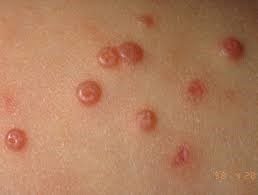Authors:
Dr Jyoti Sharma1, Dr Shivangi Jain2, Dr Sandhya Rathour2, Dr Manju Bijarnia2
- Assistant Professor, Department of Paediatrics, Homoeopathy University, Jaipur (Raj.)
- PG scholar Department of Paediatrics, Dr. M.P.K. Homoeopathic Medical College Hospital and Research Centre, Jaipur (Raj.)
ABSTRACT: Childhood cataract is the most important surgically treated disease which cause childhood blindness. Early finding of treatment is very important factor in deterring the visual outcome of congenital cataract. The name of children cataract is pediatric cataract.
KEYWORD: Pediatric Cataract, Childhood Blindness, Homoeopathy.
INTRODUCTION: A visible lenticular opacity in the eyes is termed as cataract. The cause of cataract is not known. Cataract can be congenital, sometimes it will develop after birth or it may be develop after some injury. In trisomy 13, 18& 21 are associated with cataract. Cataract which present since birth is more serious the visual system is steel immature. Cataract can be caused by caused by infection during pregnancy, due to diabetes, hypocalcaemia, hypoglycemia, galactosemia, and due to some medication.
Classification of cataract:
- Unilateral/Bilateral cataract
- Symmetric/ Asymmetric cataract
- Anterior: Anterio polar cataract-Small white discrete opacity in the center of anterior capsule
- Anterior pyramidal – White opacity at anterior pole
- Anterior subcapsular- It lies under anterior capsules of the lenses in anterior cortex.
- Lamellar: It is find in lens cortex and have spoke like radial opacity.
- Nuclear: It occupies with in embryonic or fetal nucleus.
- Posterior: Posterior lenticonus – Always unilateral & myopia & astigmatism.
Persistent hyperplastic primary vitreous: It occurs due to failure of regression of the primitive vascular system, it occurs sporadically.
Posterior subcapsular: It is often stellate or rosette shaped & secondary to trauma.
Clinical feature: History of white reflex in pupils.
Management: Surgery was the only option to correct the cataract as soon as possible after birth, maximum possibilities of success of the operation present. If there is any delay in the treatment then it may cause childhood blindness in which the child is burden on the society or for the parents for their survival. First 2 year are risky for the children to getting complication eg. intraocular inflammation, glaucoma & fibrosis because this 2 year maximum growth of eye ball can take place.
To insure the optical correction is done by convex power of the cataractous lenses and It has to be replaced by spectacles. Intraocular lenses are not advise or used for children because yet they grow their refractive power will change.
HOMOEOPATHIC MANAGEMENT:
- Baryta carbonica: Scrofulous opthalmia, cornea opaque, cataracts, alternate dilatation and contraction of pupils.
- Cannabis indica: Letters run together when reading, foresight spectral illusions without terror.
- Cineraria: It is most useful in the cure of cataract and corneal opacities, most effective in traumatic cases, compare in cataract.
- Phosphorus: Eyelids inflammed, puffy, swollen, this remedy will retard the growth of cataract, sensation as if everything were covered with dust, atrophy of optic nerve.
- Naphtaline: Sparkling synchisis, soft cataract, opacity of cornea.
- Senega: Dryness, with sensation as if too large for orbits. Lachrymation. Promotes absorption of fragments of lens, after operation. Flickering; must wipe eyes frequently. Double vision; better only by bending head backward.
- Strontium carbonicum: Burning and redness of eyes. Pain and lachrymation on using eyes. Violent jerking and quivering of eyelids.
- Secale cornutum: Incipient cataract, senile especially in woman. Eyes sunken and surrounded by blue margin. Suppressed secretion of tears. Pain in eyes, with feeling as if spasmodically rotated.
- Platanus: It is very good medicine for cataract. Acts best in children. Both acute and old neglected cases, where destruction of tissue occurred and cicatricial contraction caused marked deformity of lid, restored to practically normal conditions.
CONCULUSION & DISCUSSION: Pediatric cataract is a very serious problem because it can leads to childhood blindness, if proper treatment is not taken at proper time. Homoeopathic medicines are helpful in treating cataract in some extent it gives good result and hope to the parents.
BIBLIOGRAPHY:
- Paul VK, Bagga A. Ghai Essential Pediatrics. 8th ed. New Delhi: CBS publisher & distribution Pvt. Ltd. 2009.
- Parthasarathy A. IAP Text Book of Pediatrics. 6th ed. New Delhi: Jaypee Brothers Medical Publishers (P) Ltd.; 2016.
- Goel K, Gupta D. Hutchison’s Paediatrics. 2nd ed. New Delhi: Jaypee Brothers Medical Publishers (P) Ltd.; 2012.
- Boericke W, Boericke OE. Pocket Manual of Homoeopathic Materia Medica & Repertory comprising of the characteristics and guiding symptoms of all remedies. New York: Boericke & Runyon; 2007.
- Allen HC. Keynotes and Characteristics with comparisons of some of the leading remedies of Materia Medica. New Delhi: Indian Books and Periodicals publishers, 10th edition.





